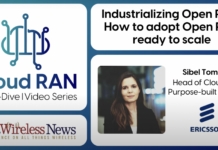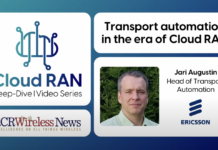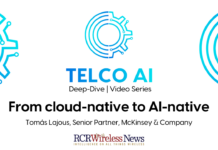Design, data, network and organizational strategies are key to effective telco AI adoption
Under its current CEO, IBM has put artificial intelligence (AI)—along with hybrid cloud, automation and security—at the center of its software and services strategies. Speaking with RCR Wireless News for the Telco AI Deep Dive series, IBM General Manager for Telco, Media, Entertainment and Distribution Stephen Rose stressed the far-reaching benefits AI can bring to communications service providers (CSPs). He also stressed the urgency of the situation, particularly in the context of CSPs who have as yet not realized material new service revenues despite the billions pumped into deploying 5G networks.
“I think generative AI is a defining moment,” Rose said in a video interview. “There’s no question of that. But like all things, it takes us a while to figure out the technology…where does it practically become implementable?” He continued, describing the need for CSPs to move as “urgent…There is going to be two types of companies in the world. There’ll be what we call AI-first companies, so those AI-first are the ones that decide that AI is an inherently important ordinary way of working within their business…Those that are AI-first are going to have significant competitive advantage in terms of cost, quality, customer experience way ahead of the competition…Be an AI-first company.”
Now back to Rose’s first comment on making AI, both generative and classical, tools that can be readily used and leveraged to make a business processes, outcomes, or both, better. Before you try to understand the solution, let’s frame the problem. He hit on two big issues facing CSPs: “One is maximizing capex…to return on investor capital…The other one is operating at the lowest [total cost of ownership], but it is also operating with the lowest environmental impact. We must solve for those problems.”
Yes, but how? First, it’s important to understand and appreciate the distinctions between consumer- and enterprise-grade AI. The former (and this is a reductive statement) pulls in data from wherever to do things like make horrifying trailers for movies that don’t exist or write limericks in the style of Martin Amis. The latter, importantly, draws on data with clear provenance that is secure, that addresses bias, and is otherwise trustworthy. With enterprise-grade AI, “You can trust it and you can become more specific and unique in the way that you apply the AI because you know exactly where the data comes from.”
He also advised to think about the idea of open ecosystems in the context of AI; there’s also a hybrid cloud angle here in that unified management can allow more robust exchanges of proprietary data than a more siloed approach would allow. The idea though is that “there’s not only an opportunity within organizational silos within a particular organization, but even within a particular ecosystem. I think there’s a huge opportunity for us in both domains, but I think if we work to less proprietary but privileged data, and then openness within the privileged data, then you get to do really interesting things with AI.”
As with any technology investment and process re-work, it’s important for the user to identify and maintain laser focus on the use case or cases. Rose called out four broad categories: customer care, IT/network automation, digital labor and cybersecurity. In terms of where a CSP should get started, Rose is thinking about three main AI on-ramps.
“One is tying together customer care and network experience so that customer experience becomes proactive and anticipates the needs and the issues…I think that’s a huge change in the way that you can run customer care and network care and have them harmonized between organizational functions…The second one is dynamic network operations and optimizations,” including business operations like finance, HR, etc…”And the third, which is of course the most exciting in many respects, is looking at dynamic selling…We should be looking at self-serve and we should be looking at consumers so that they can optimize their own experience…What are the latest innovations they can get access to? And that shouldn’t involve human intervention. It should be that we use AI to figure out what is the current experience, how do you optimize that, and where in the future the consumer, whether it be B2B or B2C, should be applying themselves.”
Regardless of starting point(s), CSPs need to use AI in a manner that’s “congruent to strategy,” Rose said. Strategic pillars include considerations from design, data, network and organizational perspectives. Illuminating the design point, he called out Nokia’s tie-up with IBM-owned Red Hat wherein Nokia’s core software will going forward be built using Red Hat’s OpenStack, OpenShift and infrastructure platforms. “That’s a great example of a vendor that has decided that hybrid cloud architecture is the way to go…and that they are becoming part of an ecosystem, and pervasively they’re working towards a dominant design point on the CSP side.”
Data, as referenced earlier, is the foundation of anything AI-related and needs holistic tuning across policy, architecture, governance and security. In terms of using AI for network automation, this needs to complement business models. Then there’s the organizational strategy. “You have to ensure that every time you touch network data…you know that inherently you’re going to be touching organizational and people strategies because skillsets have to change, modes of operation have to change…So as you mature on the first three strategies, you know that you’re going to make an impact on organization.”



